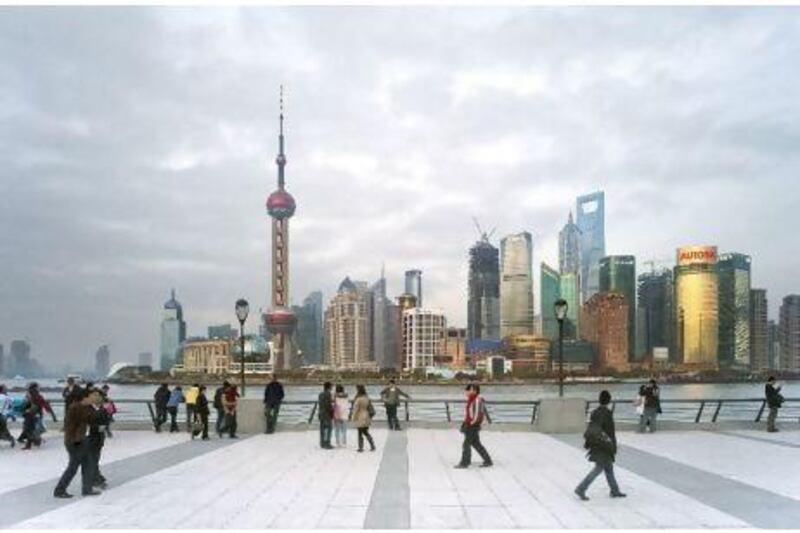Why Shanghai?
The space-age Oriental Pearl Tower is Shanghai's most iconic landmark, symbolising all that is new and brave about a city bent on reinventing itself as "the modern face of China". Once the busiest port in Asia, occupied first by the British then the French, today's Shanghai is the most-populated city in China and the world - a neon-lit, skyscraper-filled metropolis whose economy is growing faster than any other Chinese city. Its combination of old and new attracts visitors keen to sample both in one intoxicating hit, with attractions such as the downtown stretch of riverside known as The Bund, the old town Yuyuan Gardens, the wealth of art-deco architecture across the city and the new high-rises of Pudong.
A comfortable bed
Trip Advisor throws up an overwhelming 2,563 suggestions. more than any other city in the world. Anyone seeking style should head to the firmly modern Puli in Jing'an (www.thepuli.com; 00 86 21 3203 9999), which boasts an infinity pool and an Anantara Spa. With 193 rooms and 36 suites starting from 4,080 yuan, (Dh2,351) the Puli is close to the Jing'an temple and a short walk from the shops on Nanjing Road.
For a peaceful base in the heart of the French Concession, try the Pudi (www.slh.com/pudi; 00 800 525 48000 ), a small art-deco building near Fuxing Park from which you can explore the area's shops, cafes and colonial buildings. Corner studio rooms cost from 1,754 yuan (Dh1,011) per night.
For a more historical experience, head to the Peace Hotel (www.fairmont.com; 0086 21 6321 6888), housed in one of the city's most treasured monuments. Formerly the Cathay, frequented by Noel Coward and George Bernard Shaw, recent restoration has preserved charming features such as its Jazz Bar, which hints at its glamorous past. Double rooms cost from 1,700 yuan (Dh988) per night.
Find your feet
Shanghai lies on the Huangpu River, where The Bund attracts visitors keen to see the different styles of architecture it displays. Start with a long riverside walk that's enjoyable by day but even better at night under the dazzling billboards. Begin in the north at Broadway Mansions, finishing at the 49 metre-high Meteorological Signal Tower around an hour later.
On the west, sturdy turn-of-the-century buildings, formerly home to banks and shipping companies, are all smartly restored and now are home to sophisticated bars and rooftop restaurants. From here you have neon-lit views of what is often called Shanghai's future - the shiny new spires of Pudong on the Huangpu's eastern banks, and its financial hub. Shanghai can be a challenge to explore on foot but it's easy enough to nip around town on the metro for a few coins or hail a taxi, which are both cheap and plentiful.
Book a table
Perched atop one of the Bund's colonial buildings, M on the Bund is a regular haunt for noodle-weary gastronomes seeking a taste of Europe and the Middle East, but is worth a trip for the views alone. Sprawl on the large terrace for a new Middle Eastern mezze of baba ghanoush, olives and hummus (118 yuan; Dh68), followed by the legendary slow-baked lamb (270 yuan; Dh155), while watching illuminated steamboats taking diners and dancers downstream (www.m-onthebund.com; 00 86 21 6350 9988).
In Yuyuan Gardens in the old town, the size of the queue endorses the Nanxiang Steamed Dumpling restaurant's boast of "the best dumplings in China". Get in line for inexpensive takeout or, better still, bypass the crowd and pay more for a table upstairs, where a hearty portion of dumplings still costs under Dh56.
Meet the locals
On the eastern fringes of the French Concession lies Xintiandi, attracting those looking to hang out in its smart yet traditional shikumen houses, its pedestrianised streets thronging with residents and Chinese tourists. One cultural difference centres upon drink temperature. Unless you specify cold, you might be surprised to find a glass of hot water with your meal. Even ordering a cappuccino brings the question "hot or cold?"
Shopper's paradise
The fast-growing numbers of moneyed Chinese have spawned a frenzy of designer shops and malls around the city. Walk down Nanjing Road to find everything from Tiffany & Co to KFC. Huai Huai Road attracts numerous upscale outlets such as Prada and Dunhill.
For a more eclectic experience, head to arty Tianzifang, dubbed "Shanghai's Soho", where you can wander down narrow lanes hung with washing and observe China's growing preoccupation with toy dog ownership, which has necessitated the opening of a clutch of canine boutiques showcasing Paris Hilton-style pet outfits and accessories. The trendy boutiques offer vintage clothes and antique furniture, while art galleries sell Shanghai's answer to Banksy.
Want a pattern copied? Head to the fabric market on Lujiabang Road, where photographs torn from the latest fashion magazines produce perfect silk shirts (about 68 yuan; Dh40) and men's three-piece woollen suits - as perfectly fitted as the Paul Smith original - for as little as 780 yuan (Dh455). Remember to thoroughly investigate fabric quality before purchase.
What to avoid
Buying a dodgy watch from one of the many street vendors. And be extra careful when crossing roads - the rush of traffic means a red light doesn't always mean stop.
Don't miss
Catch the metro from People's Square to South Huangpi Road and wander around Fuxing Park, full of residents practising t'ai chi, cuddling their beloved pooches or simply playing musical instruments in the bushes, all under the watchful eye of an imposing statue of Marx and Engels.





